In the figure, a solid sphere of the radius is concentric with a spherical conducting shell of inner radius and outer radius . The sphere has a net uniform charge , the shell has a net charge . What is the magnitude of the electric field at radial distances?
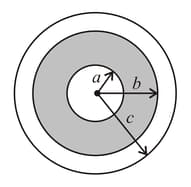


Important Questions on Electric Flux and Gauss's Law
In the figure, a solid sphere of the radius is concentric with a spherical conducting shell of the inner radius and the outer radius . The sphere has a net uniform charge , the shell has a net charge . What is the magnitude of the electric field at a radial distance ?
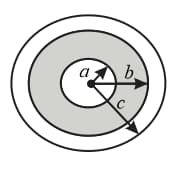
In the figure, a solid sphere of the radius is concentric with a spherical conducting shell of inner radius and outer radius . The sphere has a net uniform charge , the shell has a net charge . What is the net charge on the inner surface of the shell?
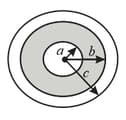
In the figure, a solid sphere of radius is concentric with a spherical conducting shell of inner radius and outer radius . The sphere has a net uniform charge . The shell has a net charge . What is the magnitude of the electric field at radial distance ?
What is the net charge on the outer surface of the shell?
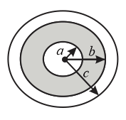
A uniform charge density of is distributed throughout a spherical volume of the radius . Consider a cubical Gaussian surface with its centre at the centre of the sphere. What is the electric flux through this cubical surface if its edge length is ?
A uniform charge density of is distributed throughout a spherical volume of the radius . Consider a cubical Gaussian surface with its centre at the centre of the sphere. What is the electric flux through this cubical surface if its edge length is ?
A Gaussian surface encloses two charges and . The field at is,
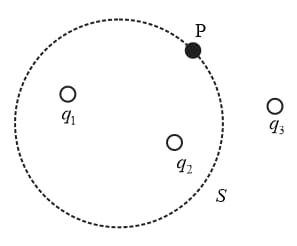
where , and are the field contributed by , and at respectively.
